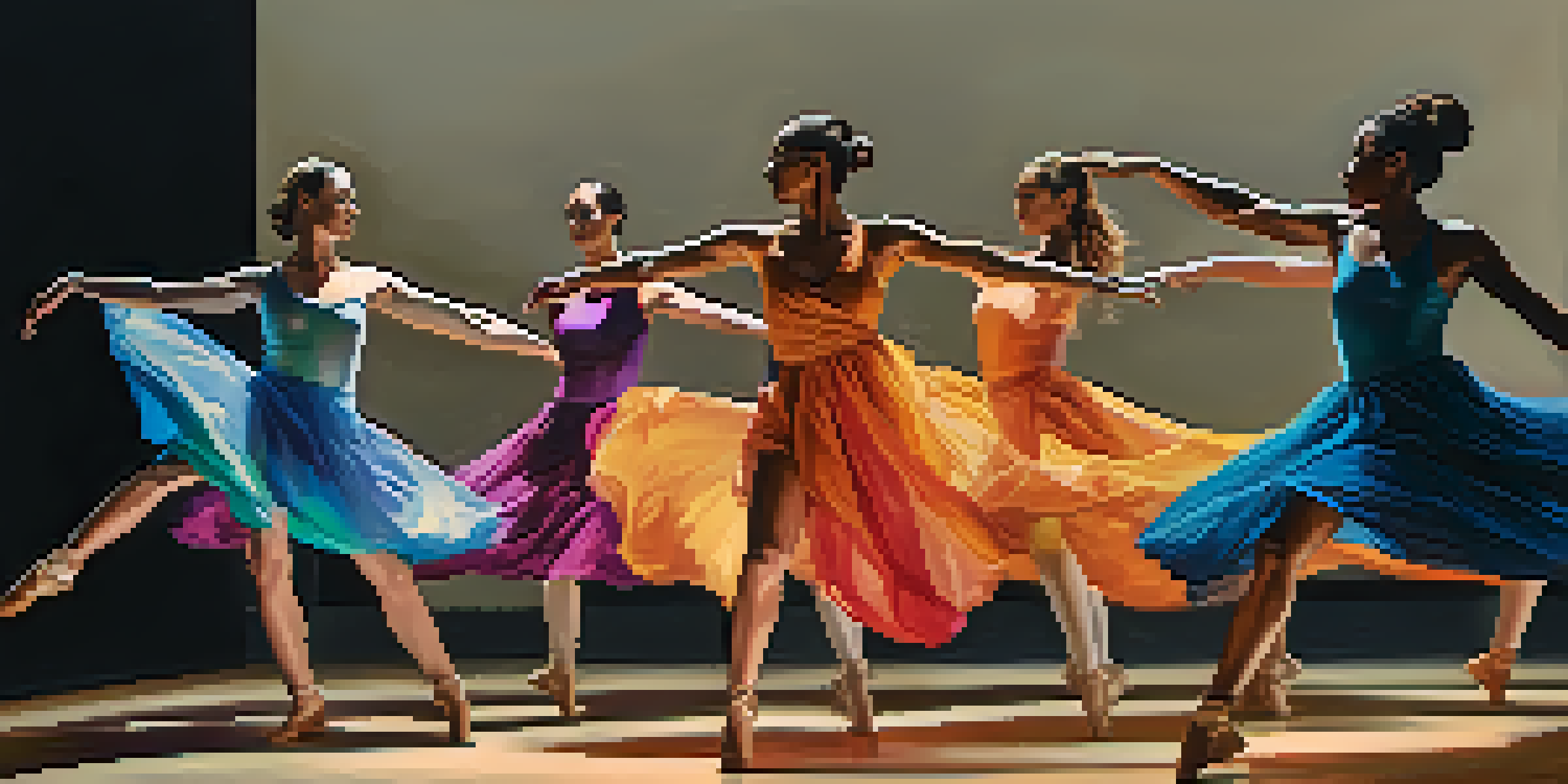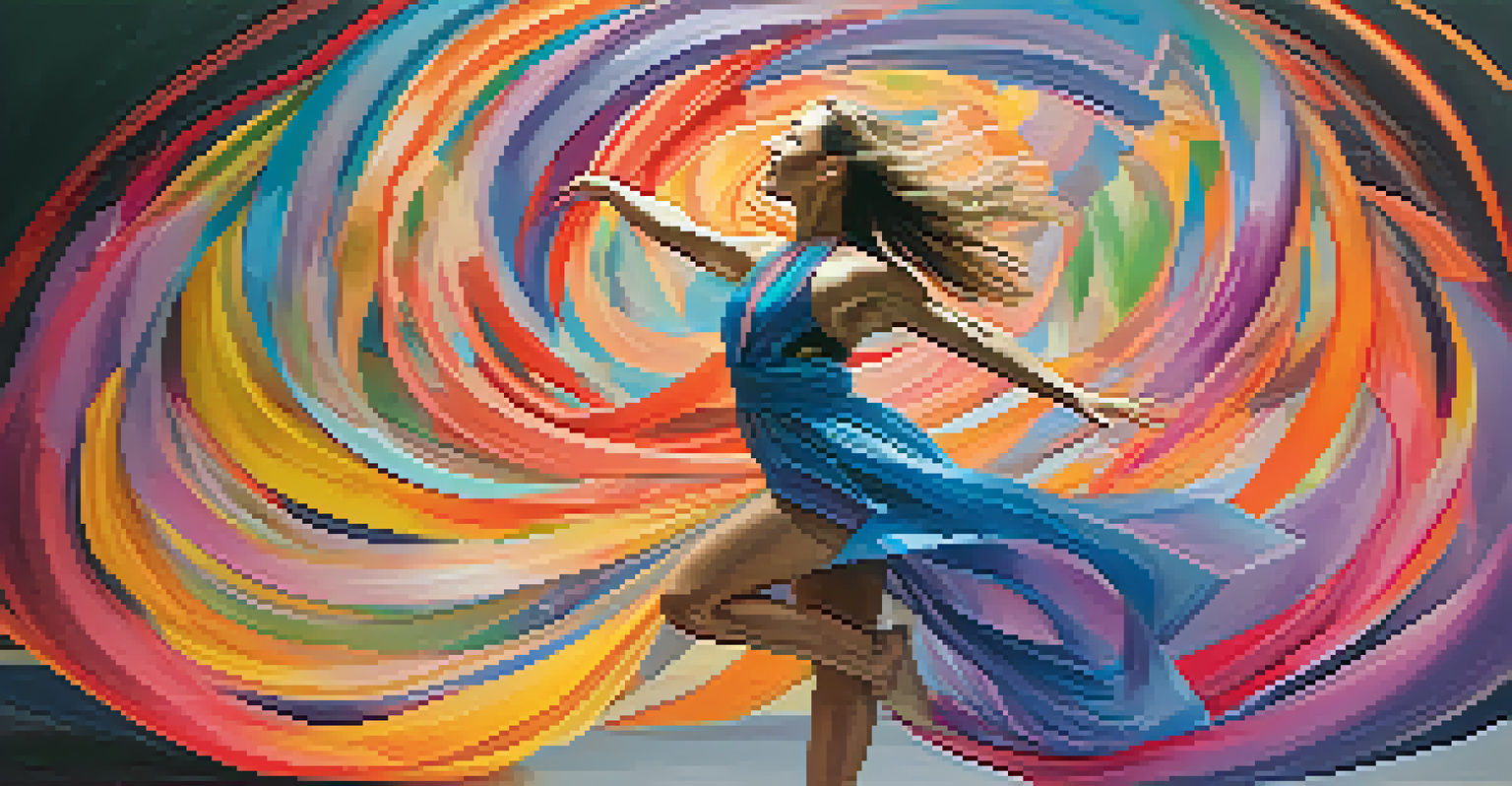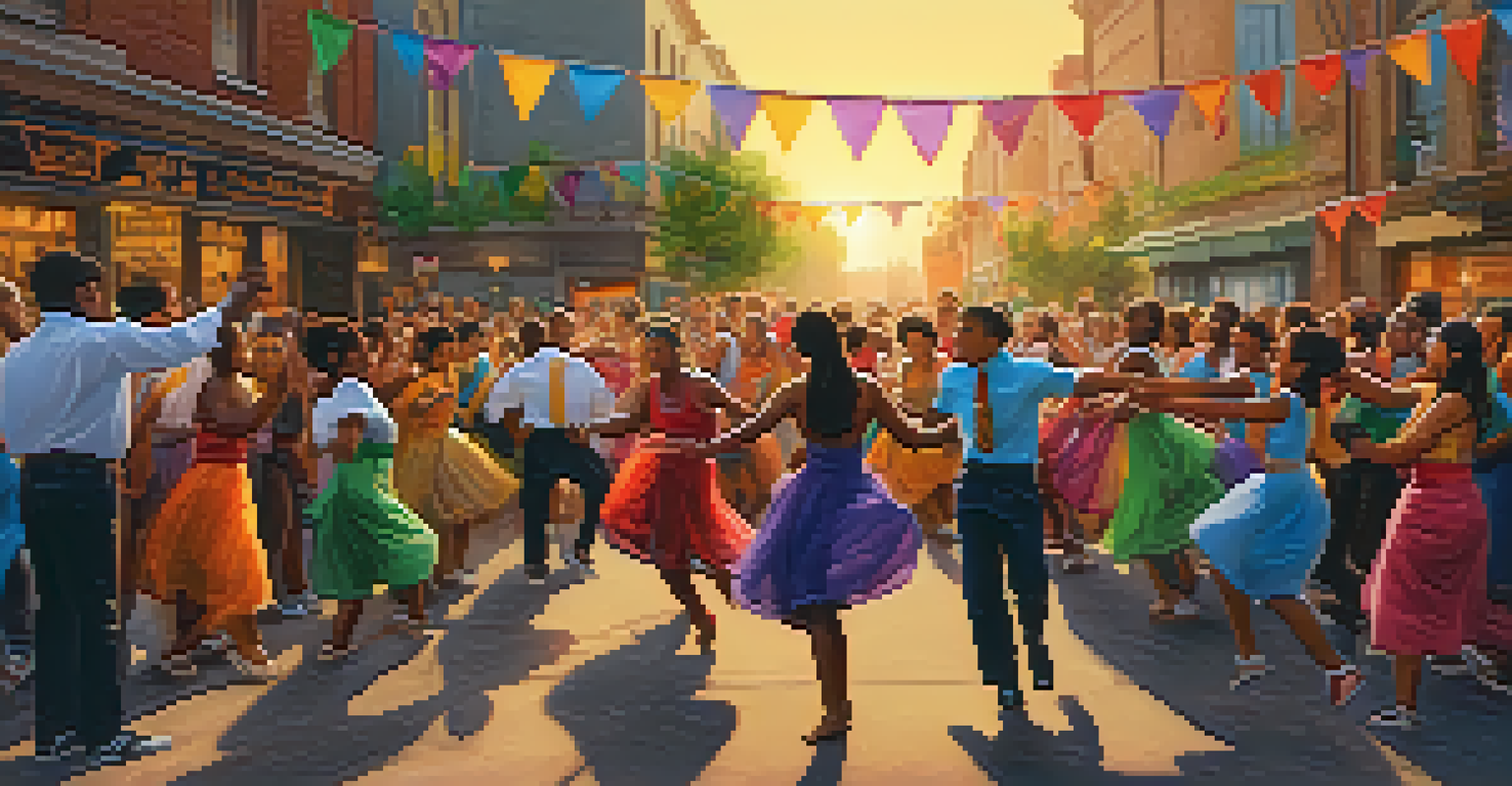Gender Dynamics in Dance and Performance Art Discourses

The Historical Context of Gender in Dance and Performance
Dance has long been a reflection of societal norms, and gender roles have played a significant part in shaping its history. Traditionally, many forms of dance have been dominated by clear gender binaries, with men often taking on roles of strength and leadership while women were portrayed as graceful and nurturing. This historical lens helps us understand how contemporary performances still grapple with these entrenched ideas.
Dance is the hidden language of the soul.
For instance, ballet is often cited as a prime example where rigid gender roles are evident. Male dancers typically perform lifts and lead the choreography, while female dancers frequently embody delicate and submissive characters. Such patterns have been challenged over the years, but the legacy remains influential in how we perceive dance today.
Understanding this context allows us to appreciate the evolution of gender dynamics in dance and performance art. As artists increasingly question traditional roles, new narratives are emerging that redefine what it means to express gender through movement and performance.
Contemporary Challenges in Gender Representation
Despite advances in gender equality, contemporary dance still faces challenges regarding representation. Many performances still perpetuate stereotypes and fail to provide equal opportunities for all genders. This lack of representation can hinder the exploration of diverse narratives and perspectives in dance.

Take, for example, the prevalence of male choreographers in leading companies and productions, which often results in a limited vision of gender expression. Women, non-binary, and gender-nonconforming artists frequently find it difficult to break through the glass ceiling, leading to a homogeneity in the types of stories told on stage.
Historical Gender Roles in Dance
Traditional dance forms often reflect rigid gender binaries, influencing contemporary performances.
As audiences become more aware of these dynamics, they are demanding more inclusive practices. This shift is prompting a re-evaluation of what gender representation means in performance, pushing artists to embrace a broader spectrum of identities and experiences.
Intersectionality: The Overlap of Gender and Other Identities
Gender does not exist in a vacuum; it intersects with other identities such as race, class, and sexuality. This intersectionality adds layers of complexity to how individuals experience dance and performance art. For instance, a Black woman in a performance space may face different challenges than a white woman, highlighting the nuances within gender dynamics.
The body says what words cannot.
Artists are increasingly exploring these intersections in their work, creating performances that challenge the audience's understanding of identity. By weaving in elements from various cultural backgrounds and experiences, they bring a richer, more authentic narrative to the forefront.
This approach not only enriches the performance itself but also fosters a more inclusive environment where diverse voices are heard and celebrated. As the discourse around intersectionality continues to grow, it is reshaping the landscape of dance and performance art.
The Role of Audience Perception in Gender Dynamics
Audience perception plays a crucial role in how gender dynamics are interpreted in dance and performance art. How viewers respond to a performance can either reinforce or challenge traditional gender roles. For instance, a contemporary piece that subverts gender norms might be met with resistance or confusion from audiences accustomed to conventional portrayals.
The relationship between performer and audience creates a dialogue that can shift societal perceptions. When audiences engage with performances that challenge their preconceived notions, it opens the door for broader discussions about gender and identity.
Challenges in Gender Representation
Contemporary dance still struggles with stereotypes and unequal opportunities for diverse identities.
This dynamic is particularly evident in community performances where local narratives are brought to life, prompting audiences to reflect on their own views. Such interactions demonstrate the potential of dance as a transformative medium for understanding and addressing gender issues.
Choreography as a Tool for Gender Expression
Choreography serves as a powerful vehicle for exploring and expressing gender identity. Through movement, choreographers can convey emotions, challenge stereotypes, and provoke thought. This artistic expression allows for a nuanced exploration of what it means to inhabit a particular gender.
For example, some choreographers have sought to express the fluidity of gender through innovative movement styles that defy traditional categorization. By blending various dance forms, they create new vocabularies that reflect the complexity of modern gender identities.
This creative freedom not only enriches the choreography itself but also encourages audiences to reconsider their own understanding of gender. In this way, dance becomes a space for dialogue and exploration rather than mere entertainment.
The Impact of Technology on Gender Dynamics in Dance
Technology has profoundly influenced how gender dynamics are expressed and perceived in dance. With the rise of digital platforms, artists are finding new ways to reach audiences and share their narratives. This shift has allowed for greater diversity in representation, as performers from various backgrounds can showcase their work beyond traditional stages.
For instance, social media platforms enable dancers to share their unique interpretations of gender through videos, reaching audiences globally. This democratization of performance art provides opportunities for underrepresented voices to be heard, fostering a richer dialogue about gender.
Intersectionality in Dance Artistry
The intersection of gender with other identities like race and class enriches the narratives in performance art.
Moreover, technology also allows for innovative collaborations that can further challenge conventional narratives. By merging dance with digital art, filmmakers, and designers, artists can create immersive experiences that push the boundaries of gender expression in performance.
Future Directions: Embracing Fluidity and Diversity in Dance
As we look to the future of dance and performance art, embracing fluidity and diversity will be essential in redefining gender dynamics. The emerging generation of dancers and choreographers is already challenging traditional frameworks, seeking to create inclusive spaces that celebrate a spectrum of identities.
This shift is reflected in the growing popularity of interdisciplinary performances that blend dance with other art forms, allowing for a richer exploration of gender. By breaking down barriers, artists can create works that resonate with broader audiences and reflect the complexity of contemporary society.

Ultimately, the future of dance lies in its ability to adapt and evolve. By fostering a culture of inclusivity and embracing diverse narratives, the art form can continue to be a powerful platform for addressing and reshaping gender dynamics.